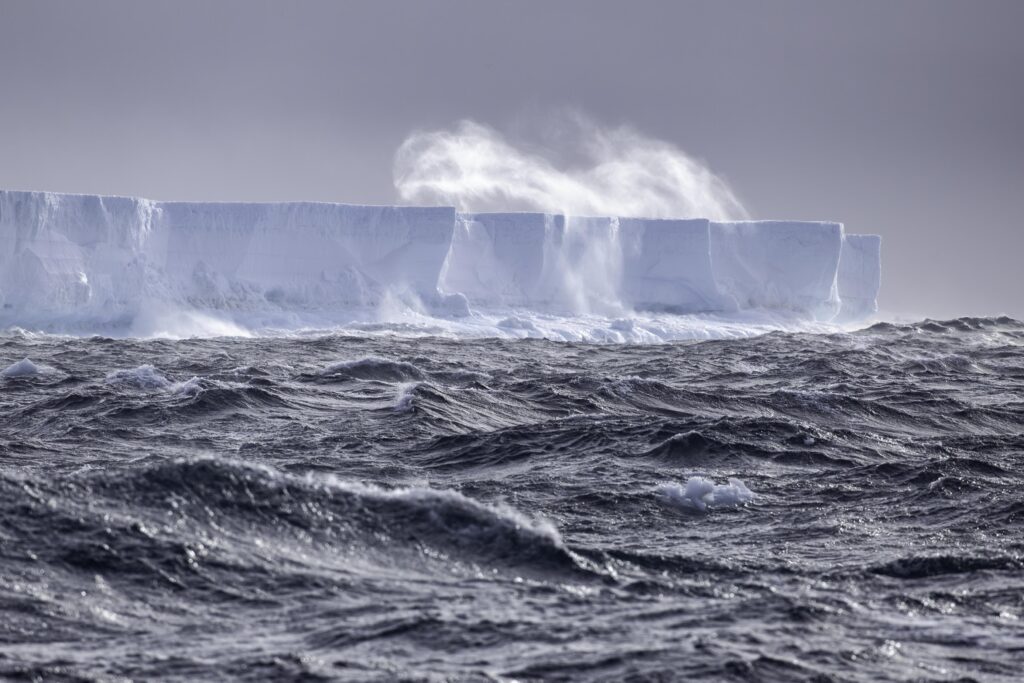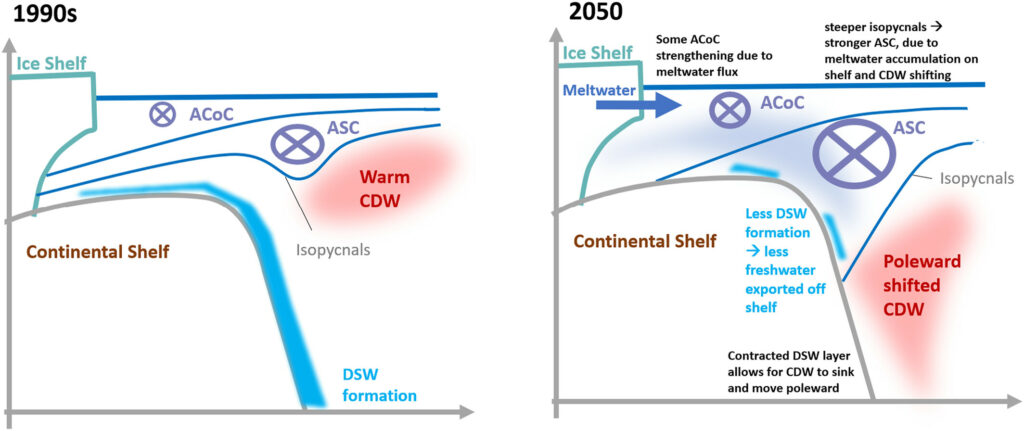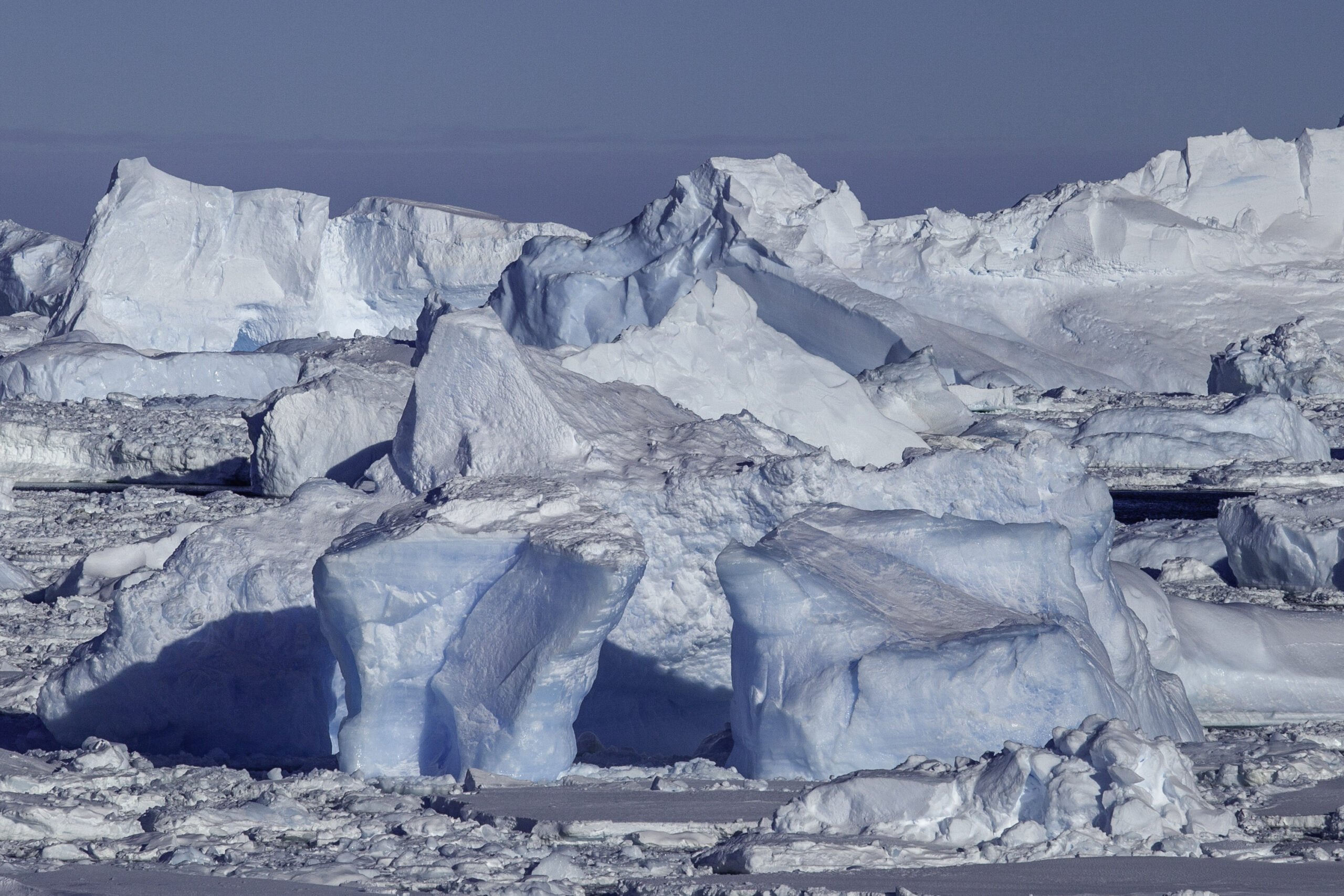Antarctic ice melt to drastically alter the structure of key Antarctic current, new research finds
Antarctica’s “last oceanic defence” could be transformed by the melting of the very ice it shields, according to a ground-breaking new study.
Published in Geophysical Research Letters, the study predicts the melting of Antarctic ice through climate change will alter the Antarctic Slope Current (ASC), causing it to strengthen in flow by about 50 per cent by 2050.
The ASC flows westward, encircling most of the Antarctic continent and forming a protective barrier between the ice shelves, and the warmer ocean waters to the north.
The predicted shift in the current would have critical implications on the transport of heat towards the continent.

Lead author Ellie Ong for the Australian Centre for Excellence in Antarctic Studies and the University of New South Wales (now a research fellow at the Centre of Excellence for 21st Century Weather) said the change would have far-reaching impacts on the global climate.
“The meltwater coming off Antarctica is fresh and therefore less dense than the salty coastal waters, so it changes the structure of the current,” Ellie said.
“We have more work to do to fully understand the impacts of the increased speed of the current and the turbulence it will generate, but we already know that the structure of the Antarctic Slope Current is tied to heat transport towards Antarctica around large sections of the continent.”
Ellie said it was “hugely important” for researchers to continue investigating changes to the ASC caused by warming waters.
The study used high-resolution ocean-sea ice models to predict how the current will respond to climate-driven changes in wind, heating and meltwater.
Meltwater from the icy continent is expected to play the biggest role in the ASC significantly picking up pace by the middle of this century by allowing warm and salty water offshore to shift closer to Antarctica’s continental slope.
Ellie said the study was a further warning about the critical need for swift and decisive action on climate change.
“If we continue down our current path, this last line of defence may falter,” she said.
“To preserve it and to slow the unravelling of Antarctica’s icy hold on sea level and climate systems worldwide, we must act on carbon emissions.”

—
PAPER
Ellie Q. Y. Ong, Matthew H. England, Edward Doddridge, Navid C. Constantinou. (2025) ‘Transient Antarctic Slope Current Response to Climate Change Including Meltwater.’ Geophysical Research Letters. DOI: 10.1029/2024GL113983


